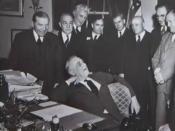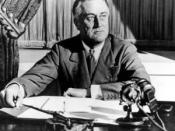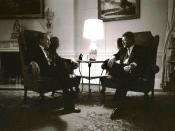What many experts had deemed as the trial of the century was finally coming to an end. After a lengthy trial that had been broadcast on television almost in entirety, the O.J. Simpson murder trial had reached its climax. As the American public anxously waited to hear the verdict, the coverage of the case was interupted. What could so important as to bump the Simpson case conclusion out of the time slot. This event that many of the networks found to be that important was President Clinton's State of the Union Address.
This example shows the importance that has been placed on media coverage of the President. Although one of the biggest stories of the year was unfolding, many networks had no problem overlooking looking the Simpson case to air the annual speech to Congress by the President (Budiansky, 1). With the evolution of media tools and the changing relationship between the President and the press, covering The United States Chief Executive has become the number one priority of the President.
This change has created a more powerful Presidency and it's relationship with the other branches of government and the public.
As the amount of exposure a President recieves has increased, so has his power. With much media attention being given to the White House, the President's ability to effect and shape policy has risen dramatically. It has become much easier for modern Presidents, who operate with the ability to be seen and heard by a majority of society at any time, to effect public opinion. This opportunity has given the President a distint advantage over his critics and opposition (Congressional Quarterly,33).
Franklin Delano Roosevelt was one of the first Presidents to effectively master the use of the media. With his distinct voice and captivating anecdotes, Roosevelt used radio identify...


